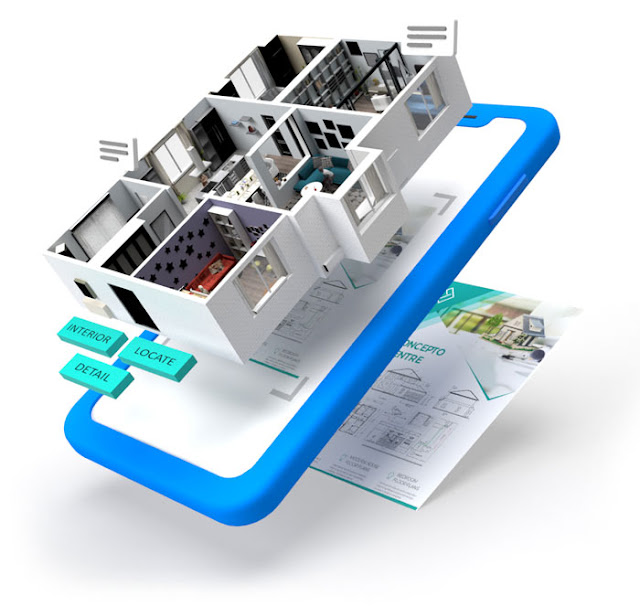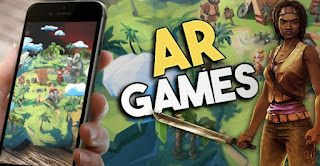Virtual Reality A Game Changer In Real Estate Marketing
Virtual Reality Home Tours: A Game Changer In Real Estate Marketing
Introduction-
The conventional method of promoting properties has become a thing of the past in the real estate sector. With the development of technology, virtual staging has become a very popular tool for sellers and real estate agents. To assist potential buyers or tenants who see themselves living in a fully furnished room, virtual staging for real estate uses computer-generated imagery (CGI) to produce realistic and enticing representations of unoccupied homes, vacant apartments, and vacant rentals. The real estate industry is constantly evolving, and virtual reality (VR) is one of the latest technologies that is changing the way homes are marketed. VR allows potential buyers to explore a property virtually, without ever having to set foot inside. This can be an excellent way for buyers to get a feel for the space and see if it fits their needs well.
· What is Virtual Staging for Real Estate?
The process of digitally upgrading vacant buildings to make them appear more attractive and comfortable is known as virtual staging for real estate. Agents and sellers may exhibit their properties in the best possible light, figuratively speaking, without having to invest in actual furnishings, which can result in savings for your seller of thousands of dollars. Virtual staging is a technique used in real estate marketing to digitally furnish an empty home or space to make it more appealing to potential buyers. This is done by using computer software to add furniture, accessories, and other items to the photos of the property. Virtual staging can be a great way to sell a home quickly and for a higher price. Studies have shown that homes that are virtually staged sell for an average of 10% more than homes that are not staged.
· How Does Virtual Staging for Real Estate Work?
Virtual staging is a process of digitally adding furniture and other objects to photos of an empty home or space to make it look more appealing to potential buyers. This is done using computer software that allows the virtual stager to select and place furniture, accessories, and other items in the photos. The process of virtual staging typically begins with the photographer taking high-quality photos of the empty home or space. The photos are then sent to the virtual stager, which uses computer software to add furniture and other objects to the photos. The virtual stager will carefully select furniture and other objects that are appropriate for the style and size of the home or space, as well as the target audience. Once the virtual staging is complete, the photos are returned to the photographer, who can then use them to create marketing materials for the home or space, such as listing photos, virtual tours, and social media posts.
· Benefits of Virtual Staging for Real Estate:
There are many advantages to virtual staging for real estate for both buyers and sellers, including:
· Cost-effective: Since buying and renting furniture is necessary for traditional staging, it can be pricey. On the other hand, virtual staging for real estate is far less expensive because it only requires the cost of the program and the actual staging.
· Versatility: Since sellers can alter the setting to suit their preferences, virtual staging for real estate offers a lot of versatility. The furniture may be customized in terms of style, color, and design, and they can even add or remove pieces as needed.
· Increased buyer interest: Virtual staging for real estate help buyers envision themselves living in a space, making them more likely to click on your listing, make an offer, and then buy your listing.
· Better online presence: Virtual staging for real estate can significantly improve the way a property is presented online, as the majority of purchasers begin their property search online. A property may stand out from the competition as a result, drawing more inquiries and showings. Because they can't picture the area without furnishings, some buyers will entirely skip past photographs that haven't been arranged.
· Faster turnaround: Virtual staging can be set up in a matter of days as opposed to weeks for traditional staging. Not to mention the bother of organizing everyone's schedules to attend the staging appointment. As a result, sellers may list their properties more quickly and buyers can view them sooner.
· Tips for Successful Real Estate Virtual Staging:
· Make sure the VR tour is high-quality and immersive. The goal is to give potential buyers the feeling that they are actually walking through the home.
· Use VR to highlight the unique features of the home. This could include the views, the layout, or the finishes.
· Make the VR tour easy to use. Potential buyers should be able to easily navigate the tour and get the information they need.
· Promote the VR tour on your website and social media channels. Let potential buyers know that they can explore the home virtually before they even set foot inside.
Conclusion: Real estate virtual reality staging is revolutionizing the field of real estate marketing. Sellers and agents can display their homes and present them in the best light by digitally improving unoccupied properties, which will enhance buyer interest and speed up transactions. Anyone can make the most of virtual staging for real estate and advance their property marketing with the advice and advantages.


Comments
Post a Comment